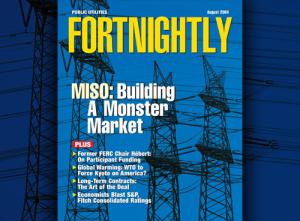While NAESB and NERC struggle over the issue, North America steadily drifts toward unreliability.
Robert Blohm, a co-author of the NERC Joint Inadvertent Interchange Payback Taskforceʼs White Paper on pricing unscheduled power, has also contributed to NERCʼs current draft “Balancing Resources and Demand” frequency control standard.
Time is running out. It's been more than two years since the North American Electric Reliability Council (NERC) Joint Inadvertent Interchange Taskforce (JIITF), on which I served, issued its white paper[1] proposing how to price the unscheduled power (inadvertent interchange)1 flowing between NERC-certified balancing authorities (BAs). This was the first serious attempt ever to price the degree to which non-adherence to generation or load "schedules" helps or hurts keeping frequency within a reliable range of 60 Hz, which is the point where all the scheduled load exactly and instantly equals all the scheduled generation on an interconnected electric system.2

A year-and-a-half ago, NERC decided implementation and further development of the paper was a commercial matter and handed it to the North American Energy Standards Board (NAESB), which thus created the Inadvertent Interchange Payback Taskforce (IIPTF) on which I currently serve. But the IIPTF has made little progress in proposing a credible standard for paying for unscheduled power flows3 between BAs because BAs will not or cannot override existing incentives for unscheduled behavior that is moving frequency away from, rather than toward, schedule ().

